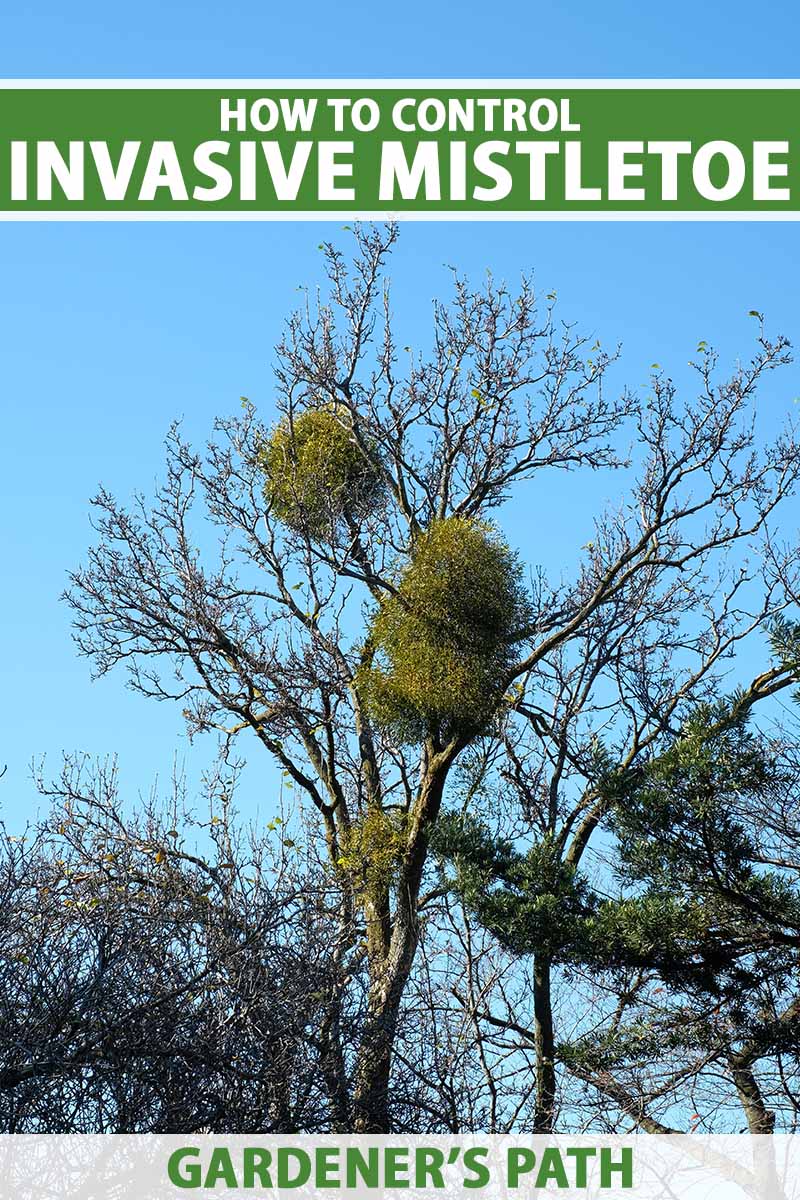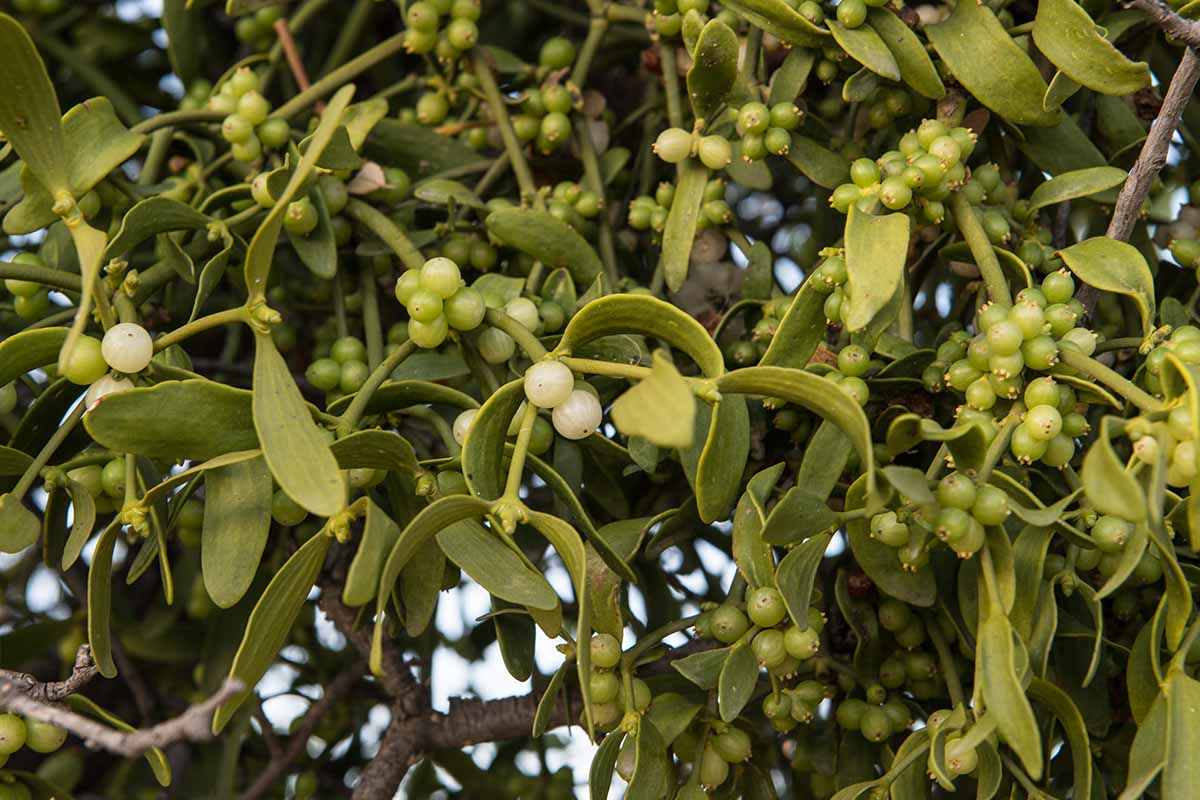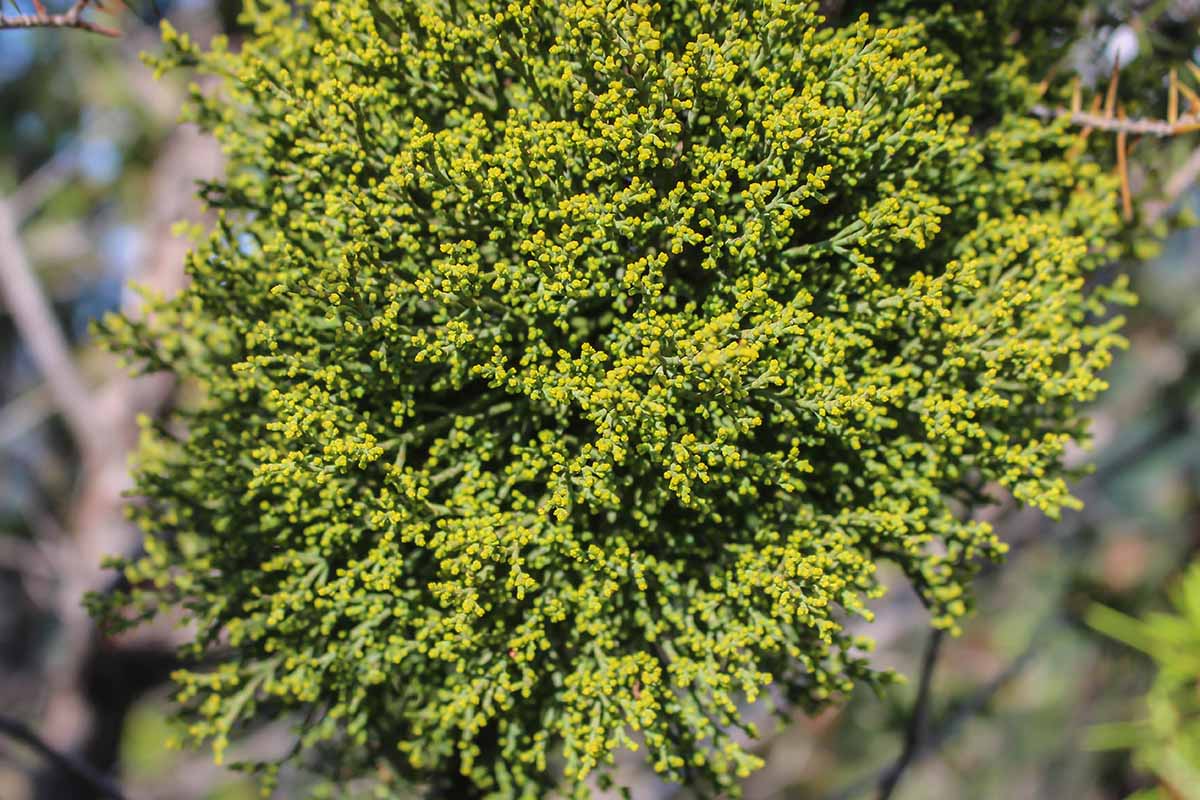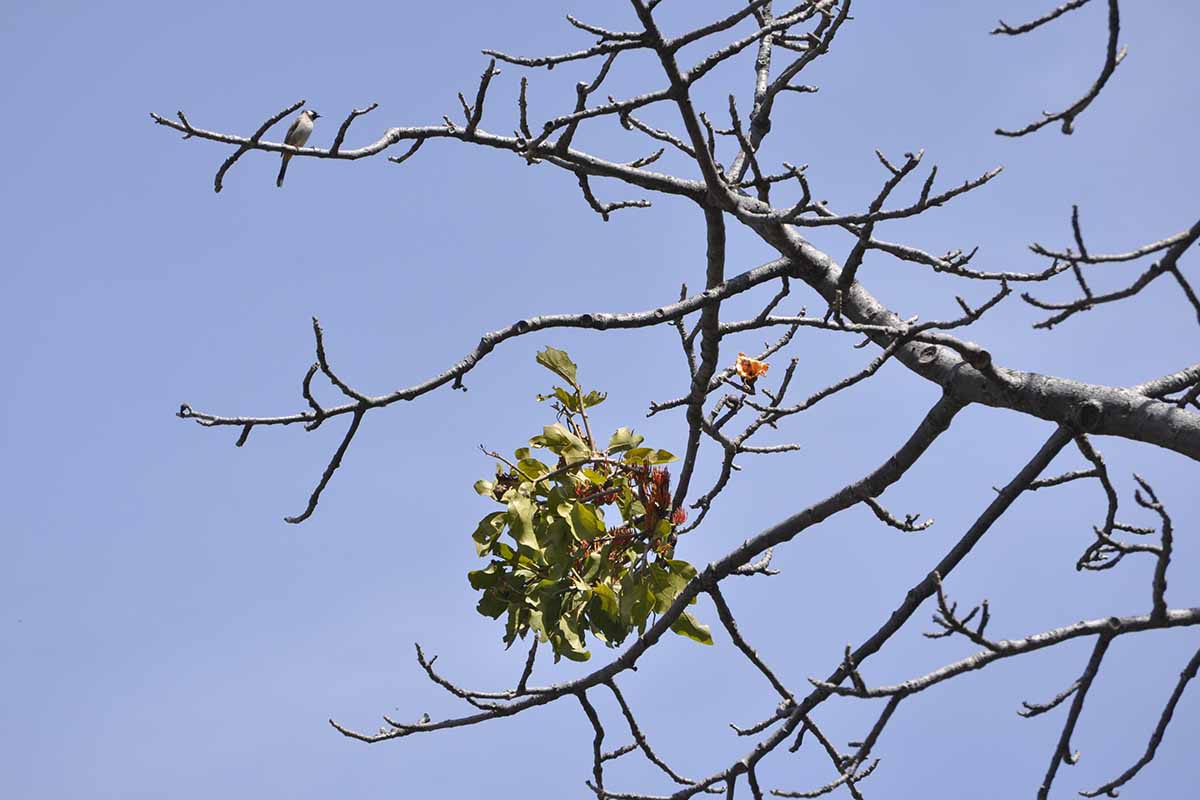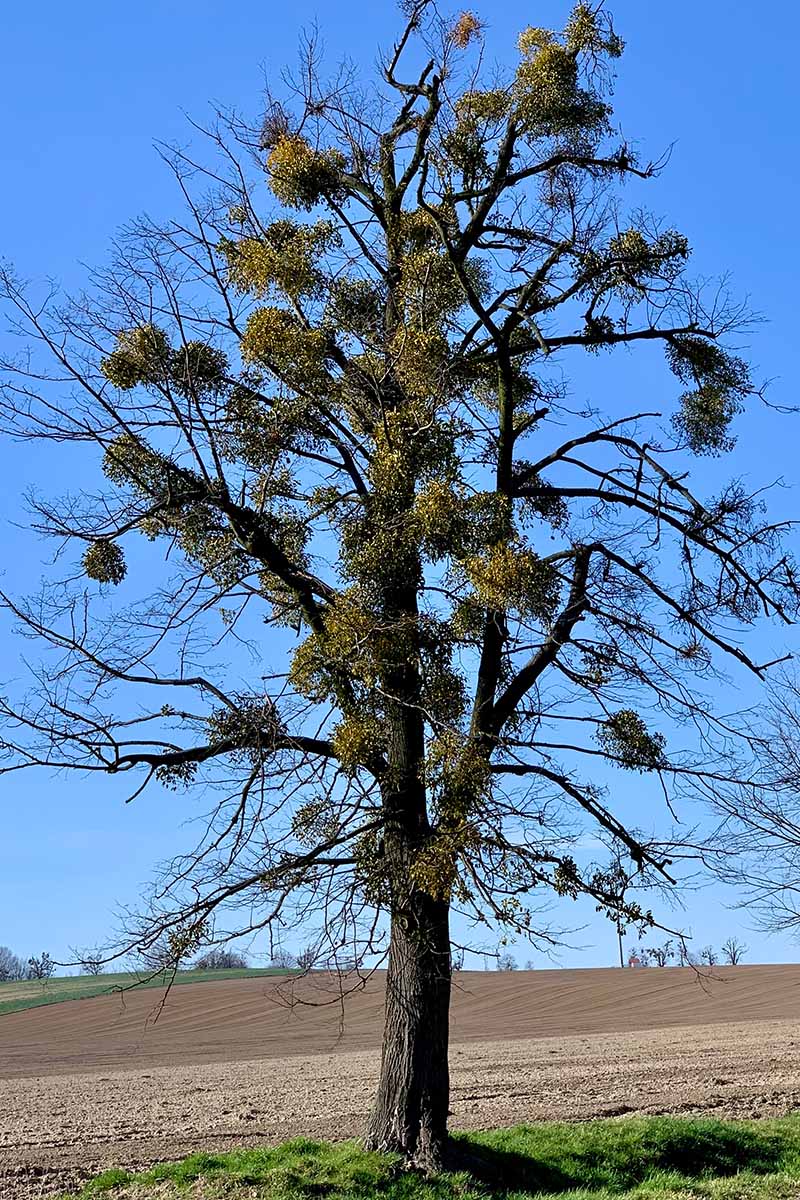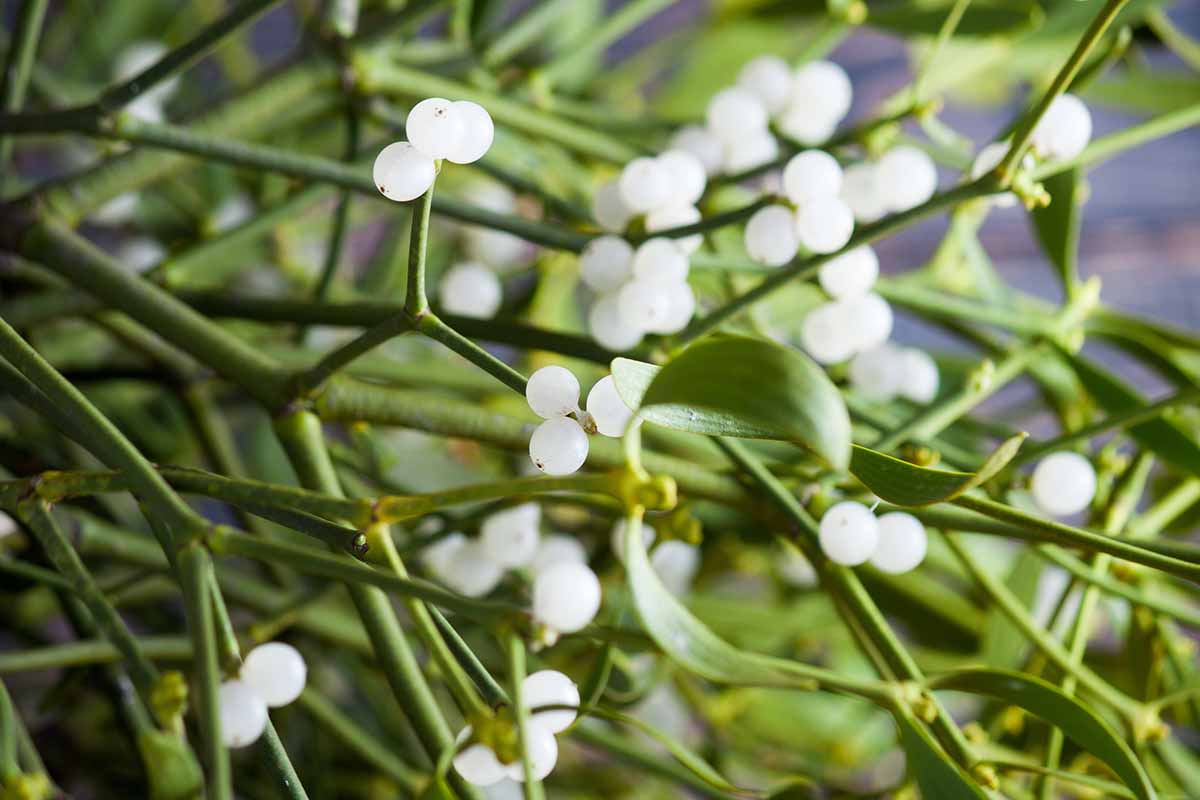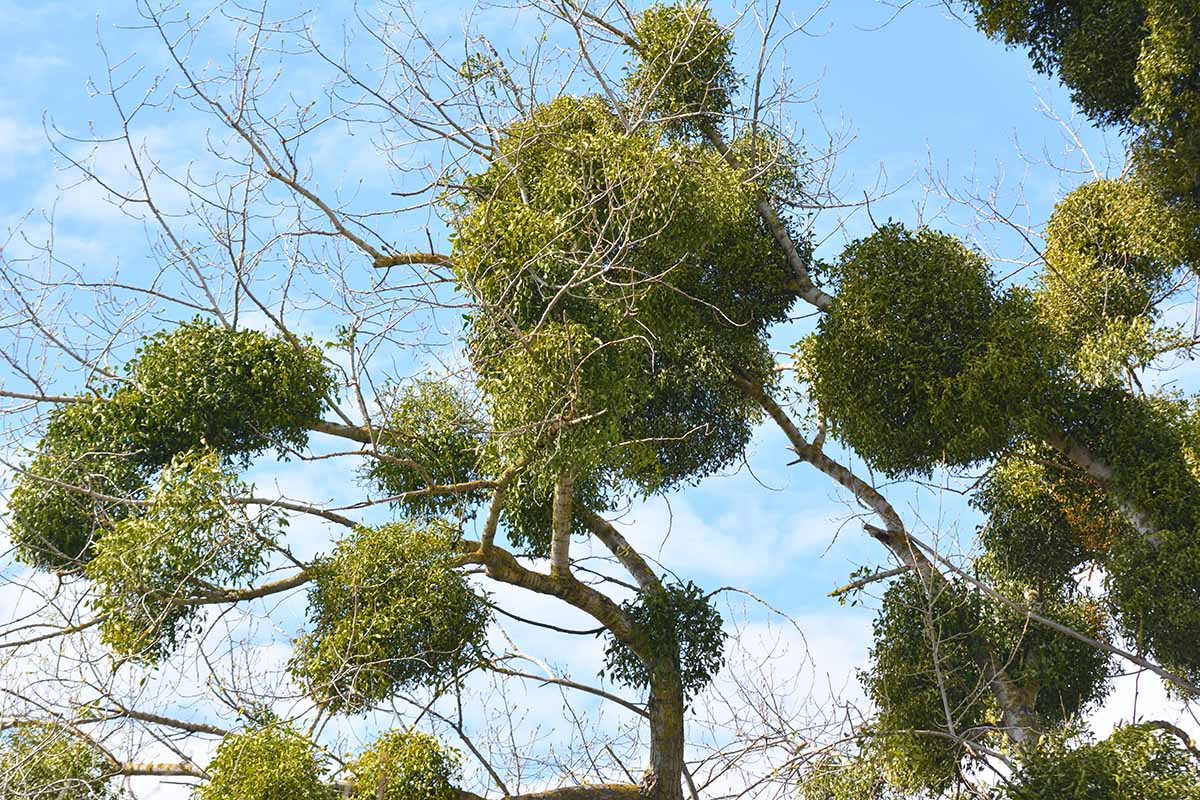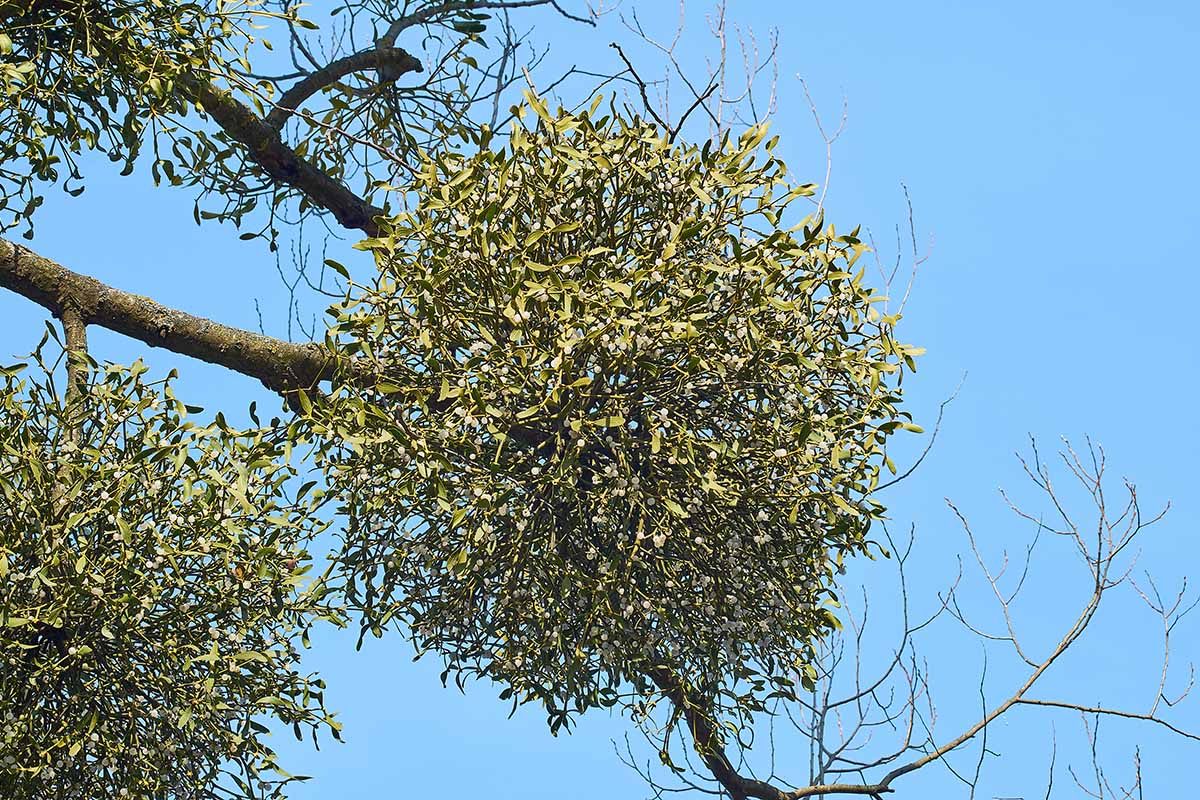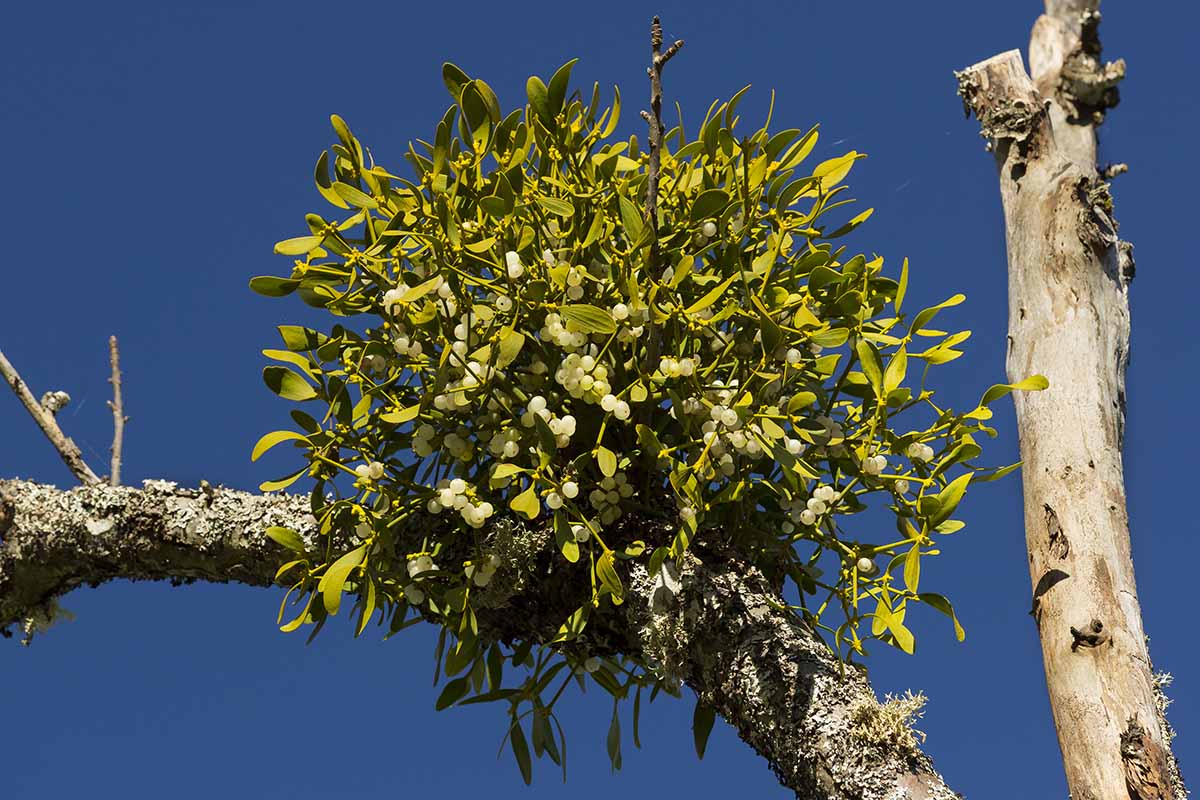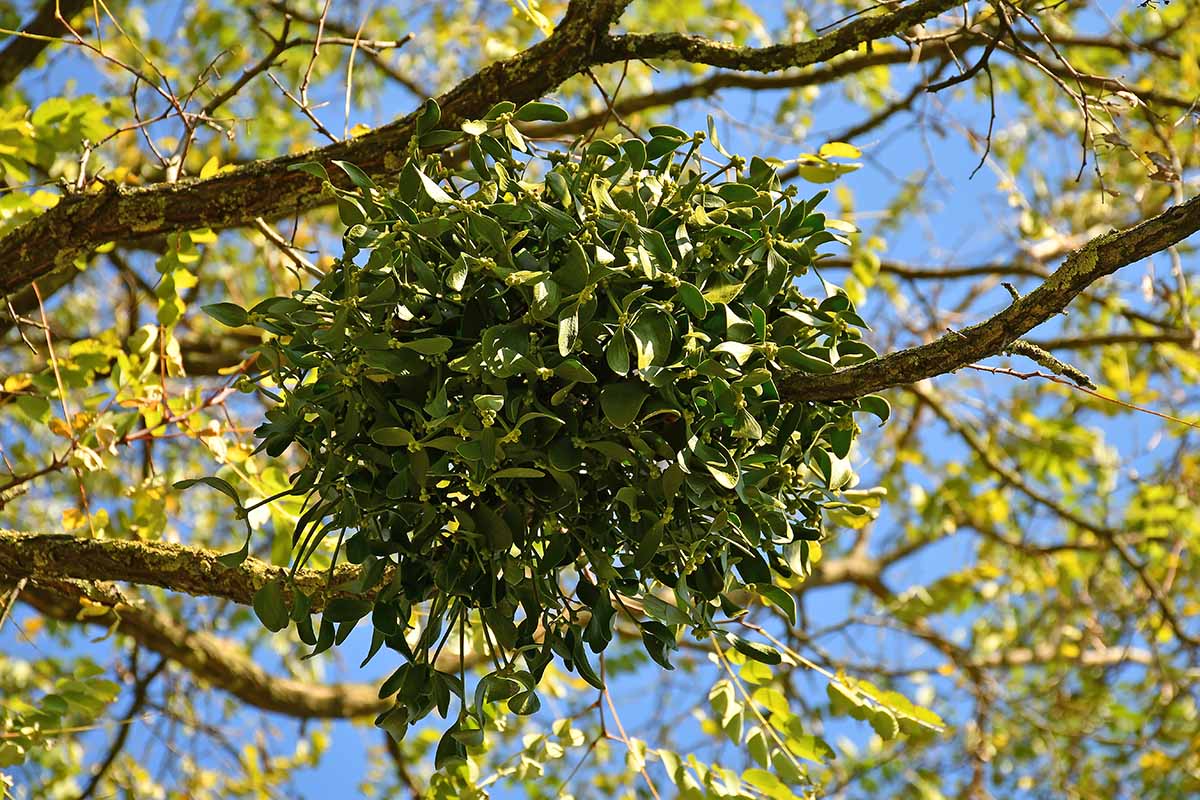Invasive species can spread to your woody ornamentals and hardwood trees and leach away their resources, which leaves them stunted, damaged, and vulnerable to health issues and pest infestation. For those who had no idea, it’s a tough pill to swallow, that – in the garden, at least – these plants are often our enemies. We link to vendors to help you find relevant products. If you buy from one of our links, we may earn a commission. For one, their specialized roots are perfectly adapted for penetrating host plants to extract water and nutrients. Additionally, their seeds can spread through bird droppings or they may be propelled via explosive fruits all too easily. And finally, you know that famous song of Jimmy Boyd’s about mommy’s kiss with Santa Claus happening underneath the mistletoe? Personally, I like to think the affair was all the mistletoe’s fault… In order to keep this pesky plant from harming your trees and shrubs, it’s important to know what it looks like, what it can do to your plantings, and how to manage its presence in the garden. This guide will address all of that and more. Here’s a preview of everything we’ll cover up ahead:
Mistletoe 101
When it comes to mistletoe, you’ve probably heard of it much more often than you’ve actually encountered it, especially if you grew up listening to Christmas music. The many plants commonly known as mistletoes aren’t a single species, within the same genus, or even a part of the same family. From the order Santalaes, there are three families of plants which include species that are considered mistletoes: the showy Loranthaceae, the Misodendraceae, and the Santalaceae, or sandalwoods. For folks in North America, infestations of Loranthaceae and Misodedraceae mistletoes are uncommon – we’ll focus on species from the Santalaceae family here. For those who dislike all that fancy botanical nomenclature, the two main groups to keep in mind are the broadleaf and the dwarf mistletoes. The broadleaf or leafy mistletoes, Phoradendron species from the Santalaceae family, have thick ovate leaves and green woody stems. Typically growing into rounded clumps at least two feet in diameter, they are hemiparasitic, meaning they don’t take in all of their energy from their hosts. They do perform some photosynthesis, but their nutrition is in part mooched from host plants. Many of these are species native to the US, and some gardeners may even choose to cultivate them intentionally in certain regions. You can read more about this process in our guide. This group’s seeds are produced within fleshy fruits, which birds consume and spread via their droppings. Because the birds can spend significant amounts of time feeding around and excreting within the same specimen, heavy infestation can occur rather quickly when the seeds sprout. Dwarf mistletoes, on the other hand, have small, scaly leaves of varied colors, and tender stems that are generally under eight inches long. These are Arceuthobium species, from the same plant family as the above-described plants. They exclusively parasitize conifers as true parasites, meaning all of their energy comes from their hosts. Seed spread occurs via their explosive fruits, which propel seeds outwards up to 40 feet away. Mistletoes produce modified roots called haustoria, which can infiltrate host tissues to extract water and nutrients, providing sustenance. Naturally, the hosts don’t like having their resources forcibly extracted while these parasites hang around rent-free. Healthy plants may be able to sustain an infestation while others will suffer as a result of this resource sharing and die back.
Signs of Infestation
It’s easiest to spot infestations in deciduous plants during winter dormancy, when they’re bare. Thankfully, the presence of mistletoes doesn’t always spell disaster, since healthy specimens can actually handle a couple of ’em without suffering huge consequences. Along with the actual vegetative body of the parasite, there are some signs you should keep an eye out for. Parasitized branches typically develop hypertrophic swelling where the haustoria attach, and the branch beyond the attachment site will often wither and fall off. A “witches’-broom” of densely-packed, small, and malformed branches at the attachment site may also be present. The rest of the infested branch will probably be stunted or killed in time, but the plant as a whole will keep on chugging. It’s the heavy infestations that are problematic – systemic weakening, stunted growth, and increased vulnerability to pests and pathogens are all common symptoms. None of these will necessarily kill the plant outright, but combine these issues with other problems such as disease or drought, and premature death can easily occur. Even if an infested plant doesn’t perish, it certainly won’t look or grow its best.
Management Methods
Once you’ve identified the infestations in your garden, it’s time to concoct a plan of attack. Let’s dive into some effective approaches.
Appreciation
Just like with bullies, a solid strategy for dealing with mistletoes is to not let them faze you. This may seem a bit backwards, since I’ve basically been bad-mouthing them up to this point. But, as much as it pains me to say, mistletoe does in fact have some ecological benefits. Native species support native wildlife. Research has shown that these parasites provide food, cover, and nesting sites for insects, birds, and small mammals. Additionally, their presence tends to attract a multitude of different species, which indicates a healthy ecosystem. They also benefit us humans: they’ve influenced our mythologies, traditions, and holiday decorations. Plus, they can be kinda cool to look at in winter, if you like rounded puffs of greenery in otherwise barren trees, with a few white berries here and there. But don’t expect to see red berries – the plant that produces those is Viscum cruciatum, a species native to Europe. So, if you only have a few plants infesting your landscape here and there and the specimen seems to be doing pretty well otherwise, there’s nothing wrong with inaction. You can always act if their growth becomes problematic later.
Chemical Control
“Forget all that,” you may protest. “I want these things gone!” Fair enough. In that case, the plant growth regulator ethephon can be sprayed directly on mistletoe to cause it to detach from host plants while limiting growth and seed production. Ethephon boosts production of the naturally-occurring hormone ethylene, which limits stem elongation, speeds up ripening, and induces senescence. But it’s worth a mention that premature leaf drop and reduced growth can also occur in host plants that are exposed to the product. Note that in humans, this product also has the potential to cause severe skin and eye irritation. The best time to apply it is in spring when daytime temperatures are above 65°F, but before the host starts putting out new shoots that could block your spray. This is only a temporary solution, however – you’ll need to reapply ethephon when the parasite grows back. But there’s no denying its efficacy in the short term. The potential for host plant damage here definitely warrants calling up a professional to help. If you have a licensed arborist on speed dial or the experience and know-how to do it yourself, have at it. Just make sure to follow the product’s instructions closely if you go the DIY route.
Mechanical Control
Pruning and manual removal is the most effective way to rid the host of the parasite and prevent further spread. Remove infested branches with a sterilized cutting or sawing tool. You can feel free to remove a single branch or two whenever you happen to notice an infestation, but larger-scale pruning should take place in early spring. Make the cut at the branch’s origin or where it meets a larger lateral branch.
Prevention
Want to save some time in the future? All of the above management steps aren’t required if you never have an infestation in the first place! This task may also be completed with the assistance of a professional arborist. Hi-Reach Pole Saw Interested in purchasing a collapsible pole saw with 25 feet of reach to complete these pruning tasks? Try this one, from Garrett Wade. If a branch can’t be removed, cut away as much of the mistletoe as possible without cutting into the wood of the host plant. After that, wrap the infestation site with a couple layers of black polyethylene, then tape or tie the wrapping so it’s secure. This will block light from reaching any hemiparasitic broadleaf mistletoes, hindering photosynthesis. But the technique doesn’t work for their dwarf relatives, since they don’t make any of their own energy – for them, you’ll have to prune the entire branch to resolve the problem. Polyethylene Sheeting For a severely infested specimen that’s beyond saving, it’s probably wise to remove it from the landscape altogether so it will no longer be a source of viable mistletoe seed. And when it comes to preventing these parasites from gaining a stronghold in your landscape, your best bet is to utilize mistletoe-resistant species. Such plants include, but aren’t limited to: ginkgos, sycamores, redwoods, cedars (Cedrus spp.), sweetgums, golden rain trees, eucalyptus, pepper trees (Schinus spp.), bigleaf maples (Acer macrophyllum), and crape myrtles. These bad boys also make great replacements for any infested plants that you have to remove. The more folks in your area grow resistant plants, the less likely it is that your property’s landscape will suffer an infestation. So spread the word to your neighbors! Larger-scale change may require pitching resistant plantings to your local government centers and homeowners associations, or some good ol’-fashioned petitioning. Hypothetically, if I’m showing a date around my totally awesome wintertime landscape – holiday Hallmark movie-style – the last thing I need is the pressure of happening upon some mistletoe literally hanging over my head. You gotta put on lip balm, check your breath, tilt your head just so… there’s a lot that needs to happen before lip-locking should occur. But if the presence of mistletoe forces a smooch too early, it’s all over. Then the other person will just shove your chapped lips away and ask why your breath smells like peanut butter. Hypothetically. Absurd, perhaps, yet a powerful motivator nonetheless… But in all seriousness, you can now manage this parasite! Kudos. Have questions or insights to share? The comments section below awaits your input. Looking for a little direction to control other invasive plants in the landscape? Arm yourself with knowledge and read these guides next:
How to Control Invasive Chinese Lantern PlantsIs Bee Balm Invasive? How to Control MonardaMy Thoughts on Weed Removal
